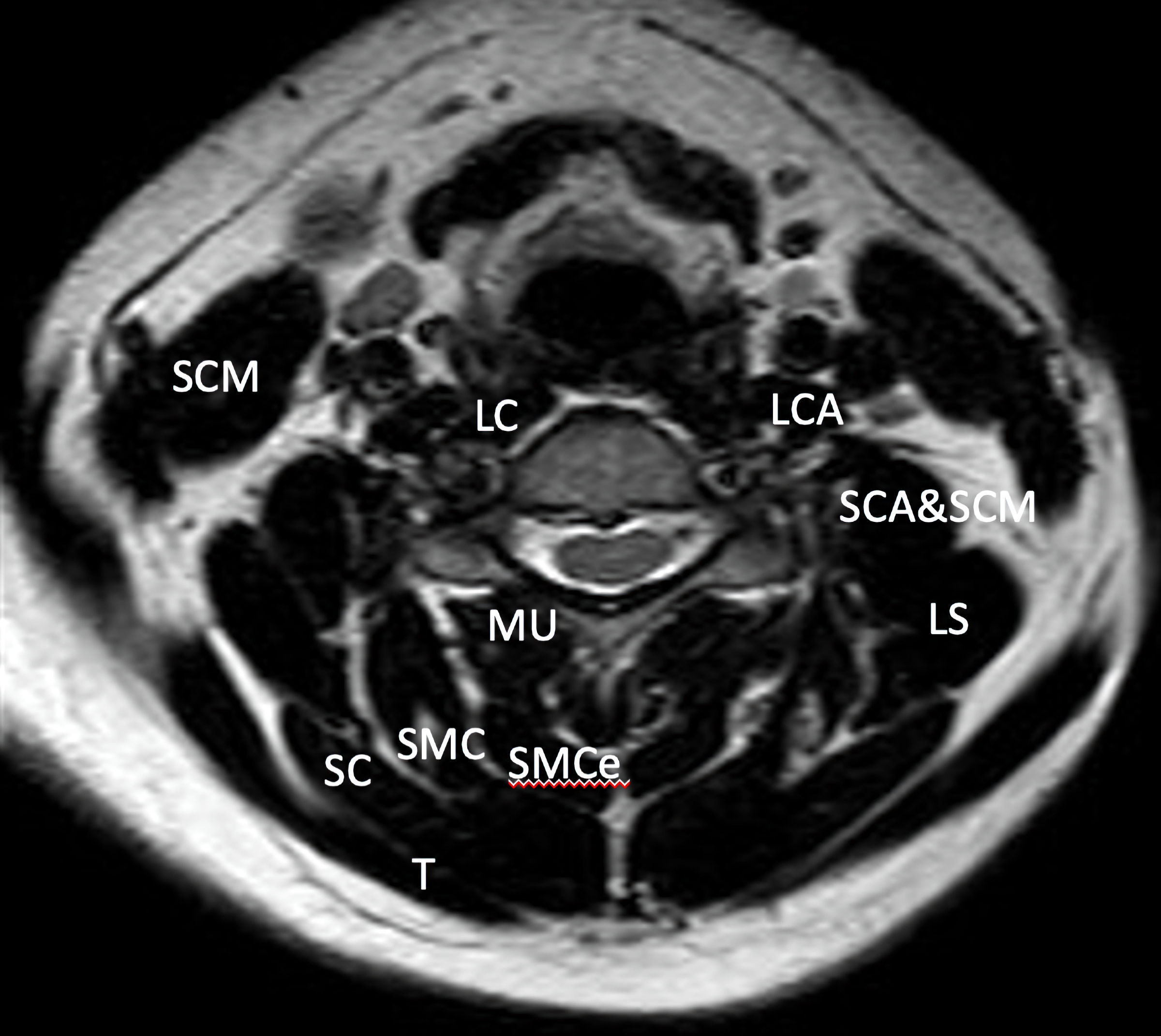| Choi et al, 2016 [19] | Retrospective case-control study | 243 divided in fusion and no fusion groups | ACDF | Increased dimensions of extensor semispinalis cervicis at C5/C6 level was found positively correlated with a successful and quicker fusion process. |
| Matsumoto et al, 2012 [20] | Prospective case-control study | 31 patients that were operated with ACDF approach, and 32 healthy adults as control group | ACDF | Posterior cervical muscles were not different significantly between the two groups with only a small decrease in the cross-sectional area (CSA) in the ACDF group. These changes were not significantly correlated to pain or functionality scores. |
| Thakar et al, 2014 [21] | Retrospective case-control study | 67 patients with cervical spondylotic myelopathy and normal subjects | Anterior cervical corpectomy-fusion-plating | Normal population has significant higher ratios of CSAs of the superficial, deep flexor (DF), and deep extensor (DE) paraspinal muscles than patients’ group (P < 0.001). Higher age patients and female patients had a lower total extensor CSA/VBA ratio (P < 0.001), while a longer duration of symptoms significantly predicted a greater total flexor/total extensor CSA ratio (P = 0.02). Among the muscle area ratios, the DF/DE ratio demonstrated a negative correlation with segmental angle change in the subgroup with preoperative straight or kyphotic segmental angles (P = 0.04 in the single corpectomy group, P = 0.01 in the two-level corpectomy group). There was no correlation of any of the muscle ratios with change in Nurick grade. |
| Thakar et al, 2019 [22] | Prospective study | 45 patients with single level radiculopathy-myelopathy or myelopathy | ACDF | Deep flexors areas as well as the ratio of deep flexors areas to deep extensors areas have a significant prognostic value of Nurick grade improvement. |
| Wong et al, 2020 [23] | Retrospective case-control study | 32 patients with adjacent level disease after a two-level ACDF procedure; 30 patients that did not have this complication | ACDF | Asymmetry of fat at C5 (coefficient: 0.06), standardized measures of C7 lean (coefficient: 0.05) and total CSA measures (coefficient: 0.05) were the strongest predictors of early onset ASD. |
